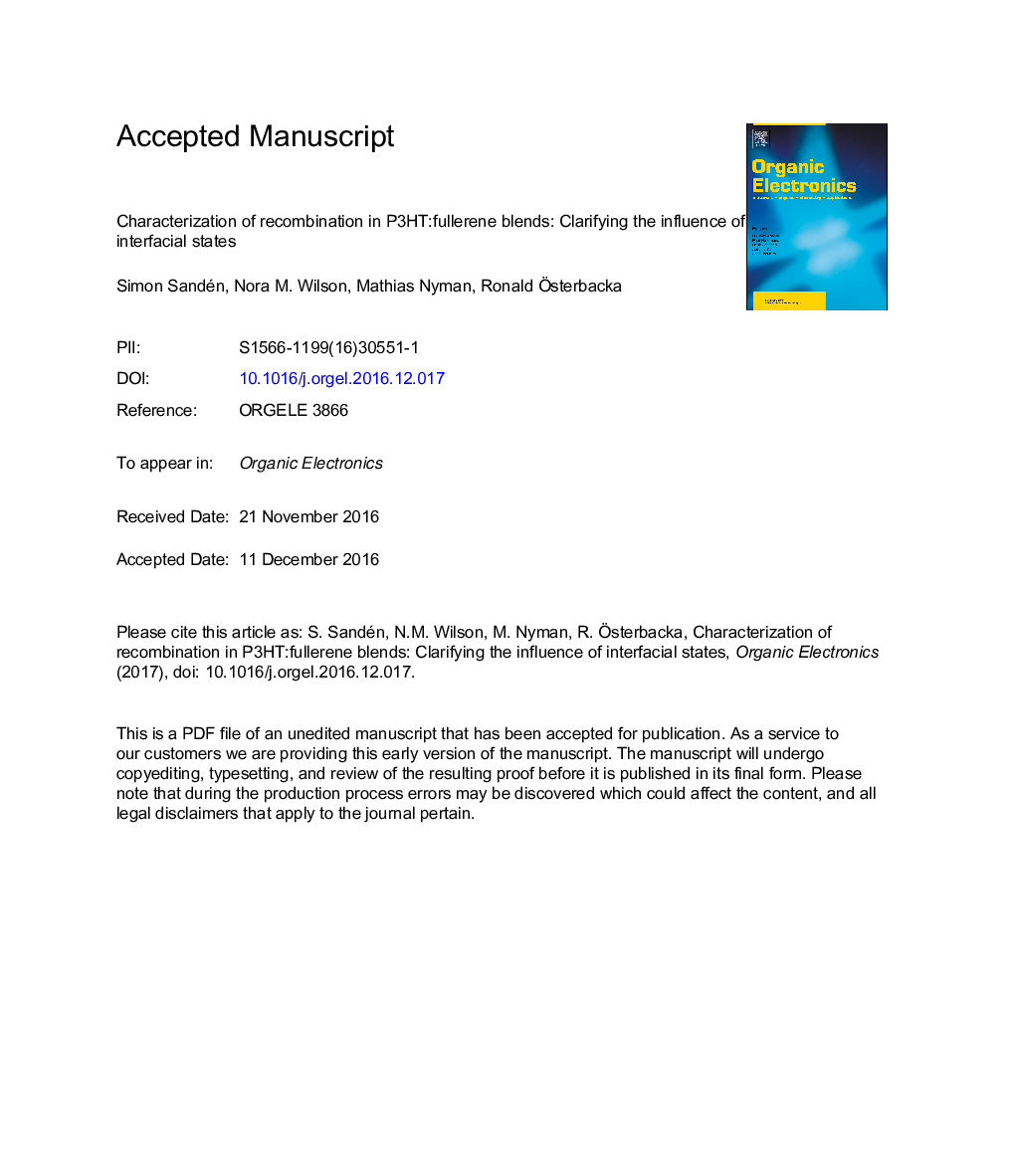| Article ID | Journal | Published Year | Pages | File Type |
|---|---|---|---|---|
| 5144251 | Organic Electronics | 2017 | 40 Pages |
Abstract
The influence of an interfacial dipole at the donor/acceptor interface on the generation and bulk recombination in P3HT:fullerene blends is clarified. We use P3HT:PC60BM and P3HT:ICBA blends which have a large and small interfacial dipole, respectively. We show that polarons are generated using above and below gap excitations in both blends. The polaron density generated using below gap excitation is lower in P3HT:ICBA blends which is suggested to be due to a higher lying CT state compared to P3HT:PC60BM blends. Using intensity and frequency dependent measurements, we show that the bulk recombination is surprisingly similar in both blends. The bulk recombination is dominated by bimolecular recombination at all light-intensities for the delocalized polarons, while for the localized polaron trap-assisted recombination dominates at low intensities which becomes bimolecular at high intensities. For the localized polaron we find that the characteristic energy for the trap depth to be Ech=24.4±0.7meV and Ech=21.3±0.3 for the P3HT:ICBA and P3HT:PC60BM blends, respectively. Comparing the ratio between the bimolecular recombination constant and the mobility, we find the recombination to be practically the same in the two blends. However, while the localized polaron does show a difference of a factor of two, suggesting faster bimolecular recombination and stronger trap-assisted recombination in the P3HT:ICBA blend having a small interfacial dipole, we conclude that interfacial dipoles have little or no effect on the bulk recombination of long-lived photoexcitations in these blends.
Related Topics
Physical Sciences and Engineering
Chemistry
Chemistry (General)
Authors
Simon Sandén, Nora M. Wilson, Mathias Nyman, Ronald Ãsterbacka,
